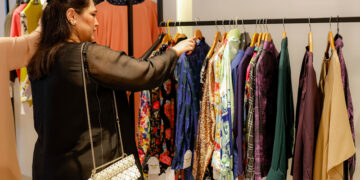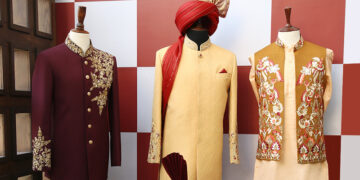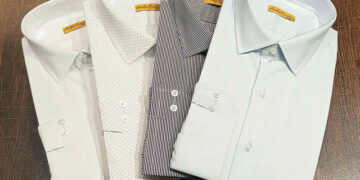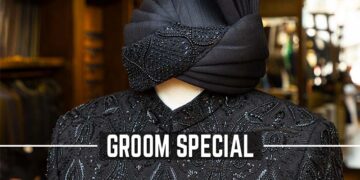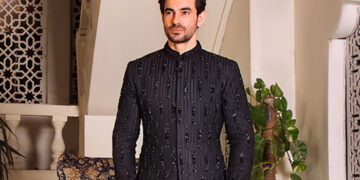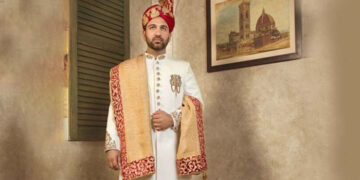 Plastic bags, newspapers, empty cans and cotton are trash to most people. However, to the students of Children’s World Schools, such items became the materials of fashion for their annual “Trashion” show.The school encouraged their students by organizing an event where they displayed their fashion in a “trashion” show.“The idea of the ‘trashion’ show first started as a science-recycling project, as the school usually holds an annual project to support the environment, like Green Day, Earth Day and several others,” said Noura Bahgat, English coordinator and the teacher responsible of this project.“This year we thought of getting students more involved in a new idea toward conservation of the environment through what they learned about the 3 Rs: Recycle, Reduce and Reuse,” she added.Taking in consideration the students’ high creativity and imagination, they thought that turning trash into fashion would indulge the students’ various massive skills.“The students reacted with great excitement and enthusiasm toward the idea of the project and showed great responsibility, competition and exquisite designs. From there we went further and thought of holding a special event to display the different designs in what we called a ‘Trashion’ Show. This had a great impact and motivated our students, as we prepared for a real fashion show. Special prizes were also announced to all our participants,” said Al-Bahgat.Students worked as partners or in groups to design head-to-toe outfits for the fashion show solely out of recycled and used materials. Students such as Lama Khaberi, Samar Salamah, Abeer Al-Naneih and Sara Al-Ballaa used empty Pepsi cans in designing a casual outfit.“The idea of our outfit was to do something different from what other girls did. So, we thought of using Pepsi cans and foil paper in designing a shirt and pants. We collected Pepsi cans and cut and glued them on an old shirt of ours. As for the pants, we glued foil on a pair of used jeans to make them look like ripped. Three long chain necklaces were added to the back. The whole thing was done so we could stand out and look different from the others,” said Khaberi.
Plastic bags, newspapers, empty cans and cotton are trash to most people. However, to the students of Children’s World Schools, such items became the materials of fashion for their annual “Trashion” show.The school encouraged their students by organizing an event where they displayed their fashion in a “trashion” show.“The idea of the ‘trashion’ show first started as a science-recycling project, as the school usually holds an annual project to support the environment, like Green Day, Earth Day and several others,” said Noura Bahgat, English coordinator and the teacher responsible of this project.“This year we thought of getting students more involved in a new idea toward conservation of the environment through what they learned about the 3 Rs: Recycle, Reduce and Reuse,” she added.Taking in consideration the students’ high creativity and imagination, they thought that turning trash into fashion would indulge the students’ various massive skills.“The students reacted with great excitement and enthusiasm toward the idea of the project and showed great responsibility, competition and exquisite designs. From there we went further and thought of holding a special event to display the different designs in what we called a ‘Trashion’ Show. This had a great impact and motivated our students, as we prepared for a real fashion show. Special prizes were also announced to all our participants,” said Al-Bahgat.Students worked as partners or in groups to design head-to-toe outfits for the fashion show solely out of recycled and used materials. Students such as Lama Khaberi, Samar Salamah, Abeer Al-Naneih and Sara Al-Ballaa used empty Pepsi cans in designing a casual outfit.“The idea of our outfit was to do something different from what other girls did. So, we thought of using Pepsi cans and foil paper in designing a shirt and pants. We collected Pepsi cans and cut and glued them on an old shirt of ours. As for the pants, we glued foil on a pair of used jeans to make them look like ripped. Three long chain necklaces were added to the back. The whole thing was done so we could stand out and look different from the others,” said Khaberi.
Another group comprised Yasmine Abudawood, Reham Majdaly, Yasmin Rizq, Lina Sabbagh, Al-Hanouf Al-Nikaty and Yusor Redwan who all worked on a dress made of crepe paper.“We added small plastic bags and put the same material paper inside it and wrapped those bags with pink, black and silver satin ribbons to match the dress,” said Redwan. “We first thought of using paper instead of plastic but then we decided to use both. This look took about a month to finish.”Although most of the clothes designed for the “trashion” show project didn’t look wearable, Noura Islam, who designed a dress using colored plastic gloves, said she would wear hers in public because her items don’t look recycled.Dima Abdulwasie, along with Seba Al-Mokhtar, designed a dress made of old newspapers and colorful papers. “We added lights and used them as belts. We also cut out random shapes from magazines and stuck them on a hat. It only took us three weeks or so,” said Abdulwasie.
The majority of the pieces were skillfully crafted, but Mayasem Seddiq’s knitted dress made from colored plastic loofahs looked like actual yarn. Her dress looked so wearable that it could fit into an actual brand runway.Joudi Al-Ghaleb designed another dress that shined at the event. She designed a wedding dress using paper plates and tissues. She actually sewed the paper napkins together, which created an amazing ruffled soft skirt. Al-Ghaleb also used white paper plates and used them as a layered corset dress.According to Majdaly, everything is possible if we just have the will to work and produce. “From this ‘trashion’ show, I learned to never underestimate Mother Nature, as it could bring wonders to the world. Here, in our ‘trashion’ show, we didn’t only work very hard to produce our designs, but we also learned the value of teamwork, which was the vital key to success,” she said.“This project and show was made for us to not only produce creative designs, but to tighten up our bonds as friends and students, and to have fun working together as we gave ‘trashy’ a new definition,” added Majdaly. – Arabnews



